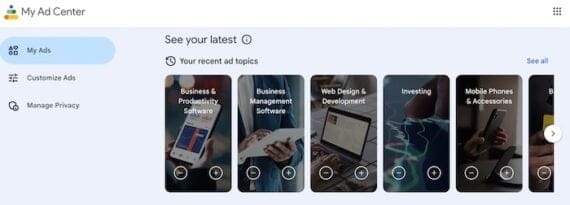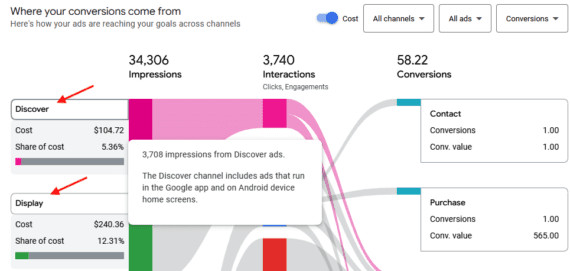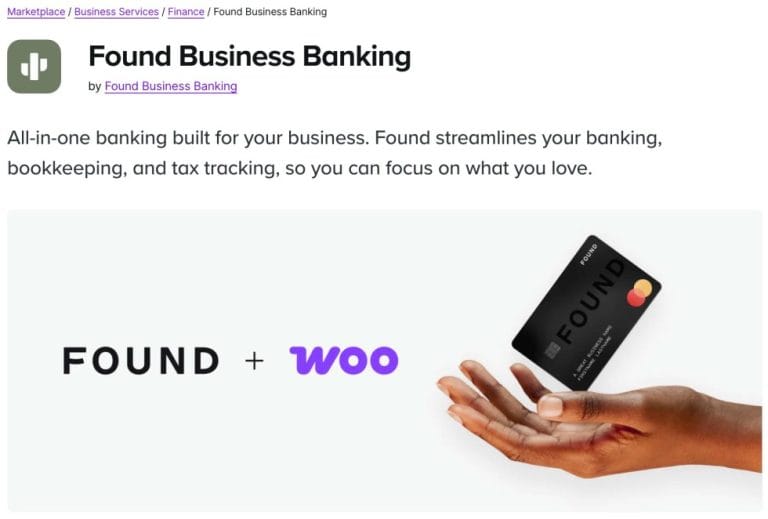Ad targeting attempts to improve the odds that the person seeing an offer or promotion will take action.
A few decades ago, almost all ad targeting was contextual. A golf shop bought ads in golf magazines or the golf section of the phone book.
Fast forward to 2025, and artificial intelligence tools capable of analyzing huge stores of consumer data have upended ad targeting. An entire advertising infrastructure can now target specific shoppers, not just related content, based on their browsing and purchasing habits.
Golf ads might appear on a news site or next to an unrelated social media post because targeting has shifted from context to people.
Such personalized ads typically produce better results and are preferred by consumers, who now see promos that interest them.
Personal Privacy
Table of Contents

Google collects much individual data, as shown on its My Ad Center.
Targeting individuals, however, has a downside. Attempts to understand personal preferences, affinities, and behaviors lead to serious privacy concerns.
Take Google’s My Ad Center, for example. It shows the topics Google associates with a given person and lists several recent ads and brands.
Certainly Google complies with privacy regulations. Yet consumers are often surprised by how much of their online activities are public.
In a sense, the advertising industry overreached. Regulators responded with legislation such as the E.U.’s General Data Protection Regulation and the California Consumer Privacy Act (CCPA).
Two recent lawsuits against The Trade Desk, a “demand side” platform for advertisers, claim the company’s universal identification technology (UID2) is an invasion of personal privacy and violates the CCPA. Ironically, replacing third-party tracking cookies was a benefit of UID2.
Better Context
Perhaps recognizing the privacy risks of targeting individuals, several ad tech companies have revisited content.
A golf shop once advertised putters in golf magazines, targeting golfers generally.
Now, an ad platform might scan a specific article on a golf site about, say, 10 ways to improve putting. To some degree, the platform understands the context and displays an ad for a new putter. The targeting is content-level — putter ads on putter articles.
Google does this with at least two of its ad types: Contextual targeting for its display ad network and AdSense’s related search for content that analyzes a page and generates links to Google Search for related queries. Both technologies match words.
But the concept could go further. A new startup, AdZen, does more than word matching. It understands the intent of an article and inserts in-line native ad links.
An article about how professional golfers play the most difficult greens at the Augusta National Golf Club represents a different level of buying intent and interest than an article on improving putting. Both mention the word putter and putting, but the latter article gets a putter ad, while the former receives an offer for a premium subscription to the Golf Channel.
This is intent-level contextual targeting. It is more specific than putter ads in putter articles. For advertisers, it may also be as effective as targeting individuals.
Easier Ads
Google and AdZen are not the only examples. Dozens of companies are trying to use AI to improve contextual targeting.
The result could be contextual ads that are easier for advertisers.
For individually targeted ads, marketers collect data about shoppers, parsing demographics, psychographics, and behavioral data, all to build audiences. Some audiences are for retargeting. Some are for suppression. And some are lookalike audiences to attract new customers.
In theory, AI-driven contextual targeting does not need any of this data. It shows an ad based on what engages a prospect at that very moment.
Instead of building audiences, marketers would build detailed descriptions of their products and how to use them. The more the AI knows about the item’s features and benefits, the better it will target.
Perhaps best of all, it needs no personally identifiable information.
PII Again
But “needing” and “using” are different. As privacy rules and regulations evolve, ad tech companies could blend AI-driven contextual targeting with personalization.
The combination could place the best message in front of a high-intent shopper in a more privacy-safe way.





